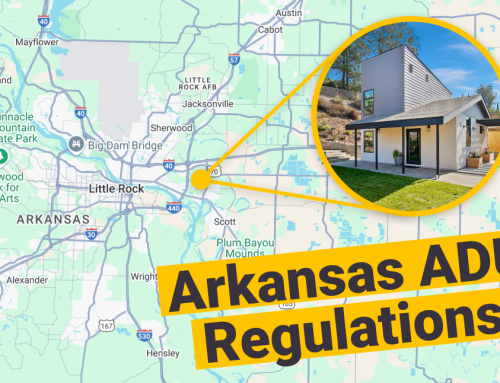Austin, TX has been taking the recent ADU surge by the horns and local policymakers show no signs of slowing down with regulation improvements.
Council Member Leslie Pool has been at the forefront of a new movement that was officially approved in December of 2023: the HOME initiative. This marks a pivotal moment, setting the stage for comprehensive ADU regulation updates throughout 2024. As Austin continues to grapple with housing challenges, these strategic measures signal a proactive approach to foster sustainable growth and improve housing accessibility for residents. Let’s dissect.
What is the Austin HOME Initiative?
The Home Options for Middle-Income Empowerment (HOME) Initiative is part of a series of updates to Austin’s Land Development Code (LDC). The LDC sets the restrictions for the types and quantities of structures allowed in certain zones. With the HOME Initiative in place, ADUs and other residential structures will be permitted in more zones throughout the city than ever before.
HOME Initiative Overview

The HOME Initiative makes the following changes to SF-1, SF-2, and SF-3 zones in Austin, TX:
- Reduces minimum size of single-family lots to 2,500 sq ft
- Allow up to three units on a single-family property
- Allow tiny homes to be classified as an ADU (RVs are excluded)
- Incentivize saving existing homes that conserve neighborhood character and help keep materials out of landfills
You can check which zone your property lies in using this zoning map.
What do each of these mean?
Minimum size of single-family lots reduced to 2,500 sq ft
While home values have dropped slightly over the last year, at an average value of $530,000, they are still unattainable for a lot of first-time buyers. Dropping the minimum size of single-family lots in half from 5,750 sq ft to 2,500 sq ft will increase housing density and open a new market of smaller homes that will hopefully be within a price range for more low and middle income residents.
The success of initiatives akin to the Mueller Affordable Program serves as a compelling example of effective urban development. By constructing smaller homes and utilizing vacant lots strategically, these initiatives have played a crucial role in addressing the pressing need for housing in proximity to the city’s core.
Up to 3 units on a single-family property
Prior to the HOME Initiative being passed, ADUs were only allowed in the Family Residence zone (SF-3). This has been extended to Single Family Residence – Large Lots (SF-1) and Single Family Residence – Standard Lot (SF-2). Depending on the size of the property, this could be a duplex and an ADU built on the same property.
However, it should be noted that size requirements for ADUs are still in place. For a duplex, two-unit, or three-unit residential lot, your property needs to meet the following requirements:
- Minimum lot area is 5,570 sq ft
- Minimum front yard setback is 15 ft
- Maximum building coverage is 40%
Tiny homes can now be classified as ADUs

This new classification of tiny homes as ADUs will make the structures easier to permit and add to single-family properties. Tiny homes will no longer be confined to tiny house parks, or other designated areas. They can be situated in backyards and connected to utilities for long-term housing. RVs are excluded from this change, however, as they are primarily classified as vehicles.
The definition for a tiny home has also been updated to read as follows: A dwelling unit that is 400 sq ft or less in floor area excluding loft space.
Incentivize saving existing homes that conserve neighborhood character
The “preservation bonus” would apply to structures built in 1960 or earlier and allow developers to build an additional unit beyond what the property is zoned for if at least 50% of the existing structure is preserved and 100% of the street-facing facade is left intact. This is to discourage developers from demolishing old modest sized homes and building “McMansions”.
Oppositions to the Austin HOME Initiative

From San Diego, CA all the way to Austin, TX, we always hear the same argument. People we like to call NIMBYs (not in my backyard) often protest against increasing housing density for fear of overcrowding and losing the character of their neighborhood. The fact of the matter is that households are shrinking and families are finding that they don’t need large sprawling homes with 5+ bedrooms anymore.
This shift in housing preferences has given rise to a new market demand for smaller homes that are more efficient, sustainable, and better aligned with contemporary lifestyles. These compact residences not only cater to the changing needs of modern households but also contribute to a more sustainable approach to urban development.
The trend towards smaller homes reflects a growing awareness of the importance of right-sizing living spaces to match the evolving dynamics of family structures and the desire for more manageable, environmentally conscious housing options.
Stay Up to Date on ADU Regulations
Maxable is the leading ADU educator. With a finger on the pulse, we’re here to empower homeowners, architects, and builders with the latest insights, trends, and knowledge in Accessory Dwelling Unit development.
Whether you’re a seasoned professional or a first-time ADU enthusiast, Maxable is your go-to resource for turning ADU aspirations into successful and transformative realities. Download our free tool kit to equip yourself with the basics towards building your dream ADU.







